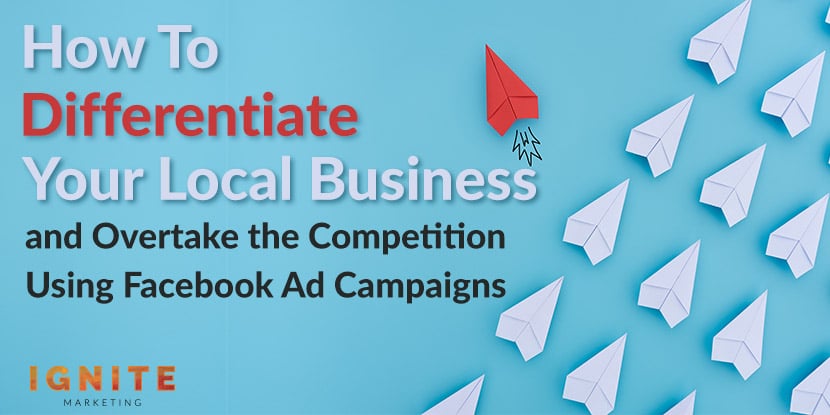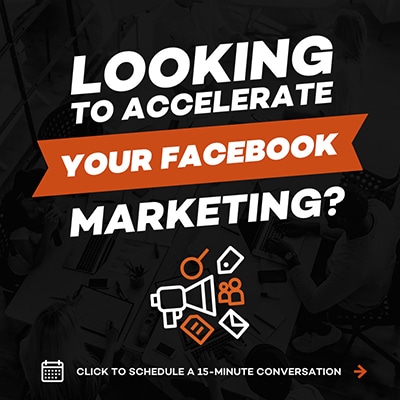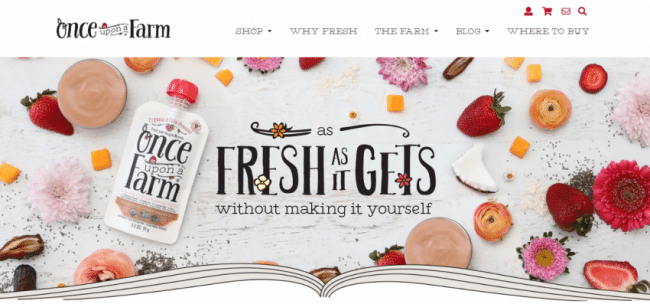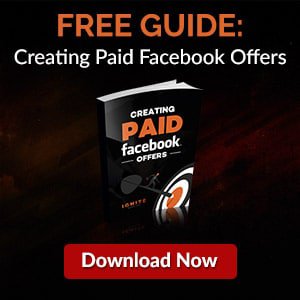


‘Why should I choose you?’
That’s a question your customers ask every time they’re faced with a purchasing decision that involves more than one similar product or service. It’s a question you ask (whether consciously or subconsciously), too.
Think about it for a minute. Why do you put one type of shampoo in your cart over another? Why do you have your hair cut at a particular hairdresser or barber? Why do you go to the same doctor, dentist, or chiropractor whenever you need medical help, dental work, or a spinal adjustment?
Your answer will always come down to one thing that makes the product or service you choose better than the rest. Even if the answer is that there are no other options in your local area, the mere fact that the service or product exits and is available to you when you need it can give it a competitive edge in the broader marketplace.
‘Why should I choose you?’
As a consumer, you can produce a reason in seconds. As a business owner, the question can be a problematic one that seems almost impossible to answer.
After all, it can be excruciatingly difficult to find THE ONE THING that makes your business different from competitors when there’s so much sameness between what you and others offer. And once you have managed to pull the proverbial rabbit out of the hat by defining your uniqueness, how do you communicate it in your campaigns?
Much like the meticulous craftsmanship required to shape your business identity, the communication of this uniqueness demands finesse. A subtle yet impactful tool in this endeavor is the business card, serving as a tangible embodiment of your brand essence. Consider the tactile difference that a Metal Business Kards can make – not merely a card, but a statement of durability and sophistication, echoing the resilience and distinctiveness that define your business in a sea of uniformity.
Beyond its utilitarian purpose, a business card serves as a lasting impression, a pocket-sized representation of your professional identity. The choice of material elevates this impression to new heights, and with Metal Business Kards, you not only hand over contact information but also a piece of art that conveys strength and innovation. It's a testament to the meticulous thought you've invested in every aspect of your business, underscoring your commitment to excellence in both substance and style.
In Seducing Strangers (How to Get People to Buy What You’re Selling), Joshua Weltman describes the ads in these types of campaigns as differentiating ads. It’s the third category he classifies, the first being introductory ads and the second being trial ads. While introductory ads increase inquiries and trial ads boost trials and sales, Weltman explains that differentiating ads “increase market share by reminding people about the unique difference that sets a product or service apart from everyone else’s.” These ads inspire loyalty. They turn new customers into repeat customers, which are the best customers to have.
If you understand the immense value and power of introductory and trial ads, you might become focused on those two alone but you’d be making a huge mistake. Differentiating ads are equally powerful and can edge out the competition in the minds of your consumers. Combine them with the unmatched power of Facebook targeting and you’ll be taking over your local market in almost no time at all.
So, how do you differentiate your business?
One of the best ways to figure out how you’ll position your product and service offerings differently is to evaluate how other businesses have strategically and successfully differentiated their businesses in a meaningful way their target market desires. Keep in mind that prospects must care about the one thing you do differently if it’s going to resonate with them and impact conversions positively.
Don’t panic if your own business’s uniqueness eludes you right now. As you work through this post, you’ll learn how you find your differentiating factor (a.k.a. unique selling proposition - USP) and build high-converting Facebook campaigns around it.
With that said, let’s take a look at three brilliant businesses that know what they’re doing when it comes to differentiation.
TOMS has become renowned for its exceptional values and corporate social responsibility. A buy one, give one company, this popular shoe retailer pairs the sales of its products with charitable giving—something they remind customers of every time they’re running a campaign.
Whether they run introductory ads such as this one:

Or trial ads such as this one:

TOMS always includes a line of copy about their charitable efforts, effectively building awareness about the brand’s feel-good USP while making customers feel like they’re part of something special.
Unlike meal kit companies such as Hello Fresh and Blue Apron, or logistics companies like GrubHub and Seamless that deliver restaurant fare, Munchery differentiates itself by making and delivering 100% all-natural and organic meals prepared by award-winning professional chefs with classical culinary training. Food is prepared fresh every day and then chilled for delivery. Customers can then heat and eat a delicious meal they didn’t have to cook and that isn’t doused in grease.
Munchery is not an on-demand food provider. Rather, they offer ‘schedule ahead’ or same-day delivery with cut-off times for orders. In addition, they offer a different menu every day.

But Munchery’s cook-and-chill format isn’t the only differentiator it has going for it. The company has also become known for its in-house team of helpful and friendly staff that deliver top-notch customer service, addressing any issues quickly while ensuring customers have a positive experience.
A disruptive and innovative grooming brand, the premise behind Dollar Shave Club is that they will deliver grooming products like razors to your door so that you never forget to replace your essentials. They combine this convenience with strategic FMCG sales solutions to create an unbeatable USP that has turned them into a multi-billion dollar company.
While they run a variety of campaign types on Facebook, they regularly run ads where their differentiation is crystal clear.

In this ad, the brand let’s a little more of its personality shine through, which is very much in line with its famous video ad.

Another thing Dollar Shave Club gets right is that they’ve built deep connection with their highly engaged community. You only have to look at the interaction with their ads to know it’s a much beloved brand.
How do you create similar campaigns for your own USP?
Before we get started, it’s important to note that knowing what makes you different isn’t only for the sake of running differentiating campaigns. Your USP will drive all initiatives and investments, especially in the areas of product and service development, customer relations, and marketing. You’ll focus better, pitch better, and deliver better. Another effective approach is to conduct a thorough analysis of an Invest Diva review. This can offer a firsthand understanding of how your competitors are perceived in the market and where your own strengths and weaknesses lie in comparison.
With that said, let’s move on to the first step in the process.
 Step 1: Do Your Research
Step 1: Do Your ResearchOne of the hardest things small business owners have to do is identify what makes their business stand out from the competition and present it in a way that attracts ideal prospects. The secret to finding your differentiation or USP lies in understanding what your target market really wants and then being able to deliver it better than anyone else.
To help you gain a clearer picture of your current situation and possible gaps, start by answering this mini questionnaire:
Your answers here will steer you towards success by helping you identify potential customer problems that you can solve in a way competitors can’t. Someone will always catch up, imitating what you do in their business. However, winning brands generally cross the line first and are remembered for it.
For example, most baby food brands create disgusting looking glop that’s been processed, boiled, and crammed full of preservatives most moms don’t want to feed their children. These products are shelved and can stay there for months depending on turnover.
Knowing their target audience and what competitors offer, Once Upon a Farm owners have distinguished themselves by producing delicious baby food made from pediatrician-recommended organic whole fruits and vegetables. Their food is grown by passionate farmers they know and trust, and they use a cold-press process to ensure all nutrients remain intact. You’ll only find their food pouches in fridges because their products are fresh. Jennifer Garner, a co-founder of the company, even appeared on Ellen, eating the stuff herself.
The company’s value proposition?
“As fresh as it gets without making it yourself.”

Their website even includes a slider that lets parents see the difference between their products and those of their competitors.

With your answers from step one at hand, it’s time to consider ways you are already differentiating your business, as well as ways you could differentiate your business. In most cases, it’s not going to be an easy task, but here are some common differentiators to help you navigate your own path to uniqueness.
Market, Niche, or Audience
Products and services differentiated by niche, market, or audience already have a built-in USP. In fact, specializing is one of the easiest ways you can set your business apart and develop messaging that expresses the unique benefit of your service or skill. Instead of yoga classes, you offer yoga classes for pregnant women. Instead of selling homes to the masses, you narrow your market based on geographics, audience demographics, style, or features. Don’t be afraid of boxing yourself in—rather think outside of the box in terms of your product and service offerings and then become known for that.
Price
How do your prices compare to those of your competitors? Are they higher or lower? Do they reflect the value of the offerings?
Differentiating by price can be a slippery slope because it’s intrinsically tied to perceived quality, breadth of knowledge, and the stability of the business environment. While your customers might not want to see a cheap doctor, they likely wouldn’t mind paying less for their monthly gym contract. Depending on what you offer, consider if and how you can use price as a differentiator. You might find you can maximize potential revenue by offering each segment of your market a differentiated product or service at a different price point.
Quality
These days, nearly every business throws the word “quality” into their marketing campaigns. Very few can produce actual evidence of it. However, if your products work better and last longer, if your services are better, or if you can offer some feature or functionality your competitors can’t, then you might be on to something. Dependability, reliability, and superior construction could very well be the differentiator you need.
Benefits
Are you the only business of your kind in your local area offering a specific benefit others aren’t or can’t articulate properly in their messaging?
While many businesses tout the features of their products and services, the reality is that people buy benefits. To differentiate your business, it’s crucial to create interest beyond the practical needs of potential customers and persuade them that you offer better value than anyone else. Instead of thinking about what your product or service has, start thinking in terms of what it does to solve a problem and make your target customers’ lives better. For example, all cars get you from A to B, but a Rolls Royce offers an emotional value: it makes the driver feel special with the added benefit of class, style, and esteem. All watches tell time, but people choose a Rolex for the prestige.
Features
Although people buy benefits, that doesn’t make features any less important. For some markets where certain features are in high demand, differentiating based on a great feature or component is sometimes the best way to go for customers. In fact, the lack of a bad or unpopular component can also be a great differentiator.
Consider your offering. Can you add more of a good feature or remove a bad one? Can you replace a bad component with a better one or add an improved version of a good one? Could you add something entirely new or include a complementary feature? If you’re already using words like “bigger”, “smaller,” “faster,” “easier,” “better,” or “smarter,” the chances are you’re talking about a feature. Start thinking about this strategically and how you can use it as a factor in your USP.
Expertise
People who have a problem they want to solve want to work with people who know what they’re doing—an expert. By building your authority and a reputation as the best, you essentially establish a USP that sets you and your business apart from the competition. If this is your differentiator, be sure to develop a strategy that incorporates both online and offline tactics since people are highly likely to Google a solution first. Keep in mind that the narrower and more specialized you become, the easier it is to create a gap between you and everyone else in your field.
Design and Experience
Can a different design or unique experience help distinguish your product or service offerings?
Think about how car companies differentiate in this manner. The Volkswagen Beetle was popular for its compact design while BMW has created “the ultimate driving machine.” Travel agents create packages that offer a unique customer experience.
When you look at the design of your own offerings, what visual aspect is different from what anyone else is offering? What’s distinctive about the user experience? Can you productize services by developing set standard packages?
Customer Service
Most businesses claim to offer great customer service, but the truth is that a lack of good service is one of the biggest complaints amongst consumers.
Here’s the thing: people like doing business with people they like and trust. Building this kind of leverage starts right at the beginning with your first point of contact. It starts with making people feel like you’re completely focused on them and their needs. And if you think it ends at final delivery of your product or service, you’d be sorely mistaken.
You have to prove your commitment to customer care by not just satisfying customers but by delighting them. That means training your staff to create positive interactions with clients and establishing how to deal with potential issues in a constructive way. It means creating customer-focused systems that make certain processes faster, easier, and better than anyone else offers. It means going above and beyond to deliver “wow” service and not just customer service. Companies like Zappos have excelled at differentiating themselves based on customer service and it has paid off in repeat customers that account for the majority of their revenue.
Innovation
Although you’ll often find tech brands differentiate themselves through innovation, innovative packaging, different solutions, or even the technology you use in the delivery of your products and services can be seen as a USP. Is there something novel about your offering or the way you deliver it? Can you develop a way to make your solution better or faster than what your competitors can deliver? If there is, you might already have a unique quality to your business you’re not currently promoting.
Community Involvement
Ever thought about how your small business can make a bigger impact on the local community you serve? Getting involved in events, sponsoring a sports team, volunteering, fundraising, or even serving on a community board is a great way to show people you care. You might not be able to do it on the same level as TOMS, but you’re unlikely to find many businesses that get involved with community events very often—if at all.
Values
 Differentiation based on ethics or values is a highly effective way to help people resonate with you and your business. Lush, for example, promotes the eco-friendly qualities of their makeup products. Whole Foods promotes a “greener” lifestyle by getting rid of their plastic bags. Several brands work on a sweatshop-free and ethically sourced model. The question is what are your brand values, and can you use them to set yourself apart from other local competitors?
Differentiation based on ethics or values is a highly effective way to help people resonate with you and your business. Lush, for example, promotes the eco-friendly qualities of their makeup products. Whole Foods promotes a “greener” lifestyle by getting rid of their plastic bags. Several brands work on a sweatshop-free and ethically sourced model. The question is what are your brand values, and can you use them to set yourself apart from other local competitors?
Local Knowledge
People tend to prefer getting help from someone in their local area. This gives you an opportunity to differentiate your business from bigger brands since you’re more likely to have direct contact with customers and build personal connections with them. The result is a referral network that drives business growth.
It’s easy to look at larger companies and point to them as your competition. However, small businesses like yours are able to adapt to change quickly. You’re able to find common ground, build interpersonal relationships, and enrich the lives of your customers through your interactions.
Next, you’ll want build out your campaign offer while keeping the uniqueness of your business, product, or service in mind.
Will you simply promote your USP? Will you include a discount or special deal? Will you choose only one of your products or services to promote? Will you promote a package?
Remember the TOMS examples from earlier? While the brand ties their USP into introductory and trial ads, you don’t necessarily have to follow their lead. Let’s say, for example, you’re the only gym in your area open 24/7. While offering a free trial or a discount on membership is powerful, creating a Facebook Ad campaign simply promoting your USP can be strong enough on its own.
A restaurant that wants to become known for its vegetarian or vegan meal options, on the other hand, might choose to create an ad promoting its USP along with a discount coupon for a vegan or vegetarian meal rather than a blanket discount that could be applied to its entire menu. Think about your USP and how you’ll build an offer around it.
Since differentiation is a primary driver of success in branding, the language you use to convey your USP is critical. In a crowded, noisy marketplace where your competitors are competing for attention across multiple channels, how do you possibly stand out and be seen?
First, you develop a distinct brand voice. This is the tone and language you use to engage your audience and express your personality and messaging. Second, you focus on your word choice.
Notice in the Dollar Shave Club examples above how the company doesn’t say “we’re cheaper than competitors.” Instead, they use witty language that makes customers feel like they’re getting a quality shave for less. The brand’s personality is evident and no one feels like they’ll be buying a cheap product even though price is a key differentiator here.
Another example of a company that uses their brand voice to great effect is Man Crates. In this ad promoting their USP, you’re getting a taste of their typical humor and irreverent style.

Notice how they differentiate both by target market (gifts for men) and a unique feature of their packaging (opening their crates ain’t easy). The video in this ad demonstrates that you need to open the crate with a crowbar—a handy tool they deliver with your order. This novel idea and their distinctive voice set them far apart from other gifting companies.
Whenever you’re writing copy for your ads, look for alternative words that might better convey what you want to say. “Quality,” for example, could be replaced by “luxurious” or “premium.” Word choice is crucial. It’s not only what you say, but how you say it.
Selecting images or a video for a campaign—especially a Facebook campaign—is often one of the hardest steps in the process. The visual you choose has to capture attention, but it also has to fuel and support your messaging.
Sticking with Dollar Shave Club (they just get so much right), take a look at the image they’ve used in this ad:

While the copy conveys convenience and a low price point, the image conveys that customers can still expect quality even though they’re paying less. The packaging is well designed and the image looks professional.
Now look at the images in the three campaign examples above and evaluate how each visual plays into what the business is trying to say. What kind of images would complement your offering and USP? Could you make a video specifically talking about your differentiation?
If you’re going with a still visual, consider using professional images of your products, services, or business premises rather than stock photos. This approach can help make your campaigns look and feel more authentic. Fortunately, videos don’t have to be production-quality to stand out because they already gain significant traction on Facebook. However, it might be good to get a short snippet professionally made so that you have a resource on hand when the need arises.
Once you have your ad copy and image, you’ll need to plug your creative into Facebook’s Ad Manager, set your bidding, choose your target audience and location, and set up the rest of your funnel. It sounds like a complex task, but there are tools like ClickFunnels to help you make certain aspects easier. In fact, I’ve written a free comprehensive guide on setting up Facebook campaigns and funnels for local businesses like yours. You can claim a free copy by signing up below.
Effective differentiating campaigns change the market. They strengthen a business’s reputation. They make a business’s products and services a clear choice to consumers.
They also don’t last long.
By all means, run differentiating campaigns as long as you have a USP. But you should also continuously look for new ways to illustrate your brand promise because other businesses will catch up at some point. It can be a challenge, but it’s also worth it.
